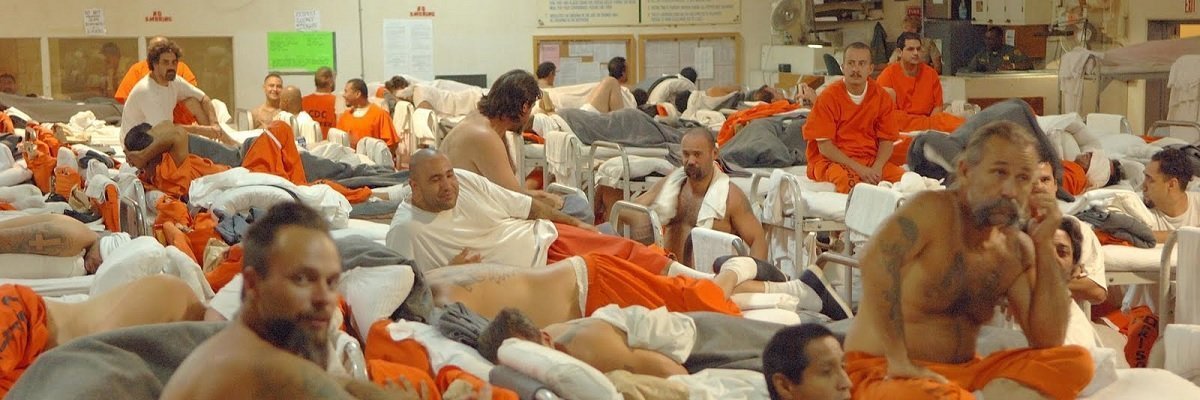Read Part 1 here
Emanuelu Tunoa is an inmate at the Saguaro Correctional Center in Eloy, Arizona. He’s a worst-of-the-worst type incarcerated character, the sort a state representative would use as an argument to enact three strikes sentencing laws, a policy that has since been implemented and revoked.
Tunoa now resides in the Corrections Corporation of American-run facility in one of the most prison-happy cities in one of the most prison-happy states in the prison-happiest country in the world, and Tunoa, convicted murderer, claims he has suffered there.

America’s prisoner population has not, historically, received the most sympathetic popular treatment. But the growing awareness that not all prisoners are violent or hopelessly beyond reentry into society; that many prison conditions can be unconstitutionally, if not fatally, bad; and that people stand to make a lot of money from the two has shifted the tide toward empathy. So even if none of Tunoa’s complaint can be determined to be reasonably truthful - as a jury found this year - one part of his claim is particularly striking.
As detailed in his original complaint, Tunoa claims that while in Administrative Segregation, where he was housed with another inmate, his cellmate, another violent man, barricaded the cell door and refused to clear it. The Special Operations Response Team (SORT) responded with chemical agents and force and once in the cell proceeded to shackle Tunoa and the other prisoner, at which point he claims he was punched and his eye grabbed.

On the way out, a staffer asked him what happened. “If you don’t tell me what happened to you,” Tunoa claims he said, “I won’t help you.”

And he claims, that even as he explained, the response was repeated.

“If you don’t tell me what happened to you, I’m not going to help you.”
Prisoners from across America have suffered from a similar response for decades. In place there are systems nominally intended to keep individual correctional officers, prisoners, whole prison systems in check, and yet the day-to-day dangers and inconveniences of prison life, for staff and inmates, can render these ineffectual. In so many instances - from prison sneakers to prison health to the benefits of prisons like Saguaro - willful ignorance is the safest, easiest route.
In letters, grievances, court cases, through their actions and their riots and their deaths, prisoners have tried to tell us what’s happened to them.
The problems at privately-operated prisons are, in many cases, not so different than those you’ll find at public ones. Violence, understaffing, poor access to medical care - these are not problems unique to conditions under a contract. But they introduce a knot of new incentives working not toward a particular societal outcome but toward a particular bottom line, and it’s still not been justified why a policy implemented with little evidence of improvement may persist unchecked and unstudied.

Tunoa, for example, is not from Arizona. Testifying officers in Tunoa’s case claim that he had the injuries when the scuffle ended and most likely got them from his cellmate. Tunoa’s from Hawaii, which is one of a handful of states that sends its prisoners to locations outside for lack of their own facilities. He was in Administrative Segregation at the time of the attack, but was sharing a cell with another inmate, a practice, double-cell solitary, that Tunoa’s home state of Hawaii doesn’t even permit. It’s yet another striking example of the complexities of working within a privatized system.
Like many prison cases, there is a sort of he-said, she-said dynamic at play, and there’s little room to accept responsibility for mistakes. “Sorry” comes at a cost. So does systemic irresponsibility. It’s just harder to measure.

In one of the cases against Winn Correctional Center, for example, one inmate claims that the mistaken administration of another inmate’s medication resulted in an allergic reaction to penicillin. The mistake is equally egregious in both public and private places, but each instance of failure is a particular insult to the trust of the American people. It’s one thing when the government, as arbiter of justice, fails to uphold its duty within it’s own prison walls; it’s another when the failure is at the hands of someone being paid.

In such a scenario, something as simple as a pair of stolen shoes can be outrageous. Even more so, the lack of reliable healthcare. And for the inmates that are bystanders in the explosion of frustrations that inmates have, their injuries and costs are punishments outside of their judicial sentence, leaving them bowing to a system that can seem like a daily affront to justice.
For decades, the he-said, she-said has worked in the favor of the private prison operator. They said that they’d be cheaper. They said that they would be more efficient. They said that recidivism would go down.
And yet, despite little evidence that any of that is true, their stocks go up.

What private prisons have in our decentralized system is a united voice for the direction in which they would like to see corrections go. The dollar amount that they spend on lobbying is less egregious than the very fact that they are in a position to lobby at all, encouraging the continued use of their product even as the most basic claims of efficacy have gone basically unmeasured and unproven, a condition that lawmakers and policy administrators have yet to change.
“If you don’t tell me what happened, I’m not going to help you.”
Even in the big data age, day-to-day difficulties can distract from the measures and metrics that would help make informed policy decisions. For inmates everywhere, it’s been one more negligence in a system with bad reviews year after year. For privatized prisons, this lack of foresight and direction has been a boon.
And it leaves us wondering: if they told you what happened, would you still help them?
Image via California Department of Corrections




